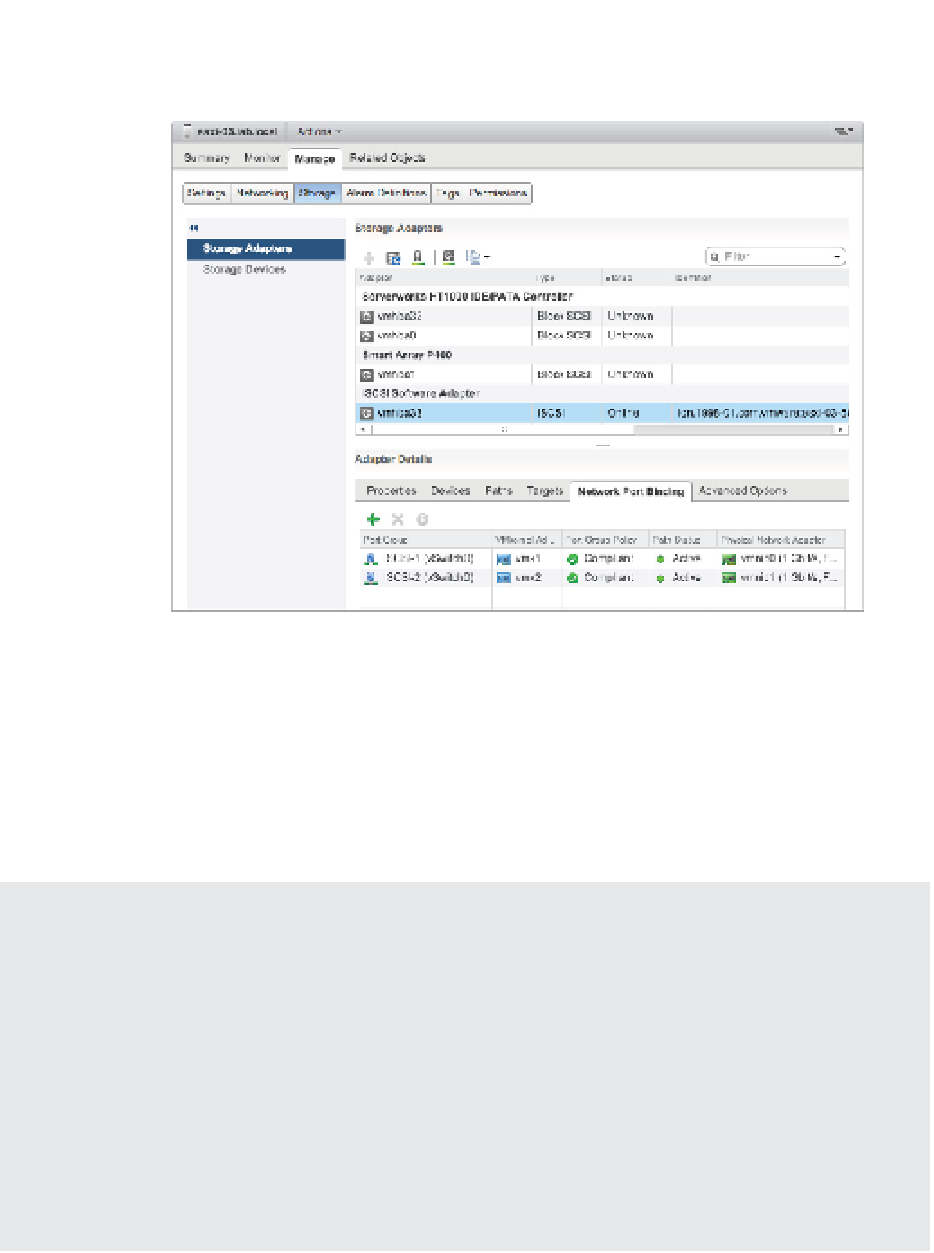Information Technology Reference
In-Depth Information
12.
Finally, click the Rescan Adapter icon to discover any new storage devices.
Figure 6.33
h is confi guration
allows for robust
multipathing and
greater bandwidth
for iSCSI storage
confi gurations.
If you've already performed the necessary masking/presentation tasks on the iSCSI array to
make LUNs available, then the LUN should now show up in the list of devices on the software
iSCSI adapter, and you can use that LUN to create a VMFS datastore. If you haven't already
presented the LUN to the ESXi host, you'll need to do so according to your vendor's instructions
(every array vendor is different). After the storage is presented to the host, a rescan of the iSCSI
adapter—using the procedure we outlined in the section “Adding a LUN via Fibre Channel”—
should cause the device to show up.
Troubleshooting iSCSI LUNs
If you're having a problem getting the iSCSI LUN to show up on your ESXi host, check the follow-
ing troubleshooting list:
Can you ping the iSCSI target from the initiator? (Use the Direct Console User Interface [DCUI]
to test connectivity from the ESXi host, or enable the ESXi shell and use the vmkping command.)
◆
Is the physical cabling correct? Are the link lights showing a connected state on the physical
interfaces on the ESXi host, the Ethernet switches, and the iSCSI arrays?
◆
Are your VLANs confi gured correctly? If you've confi gured VLANs, have you properly confi gured
the same VLAN on the host, the switch, and the interface(s) that will be used on the array for
the iSCSI target?
◆





























